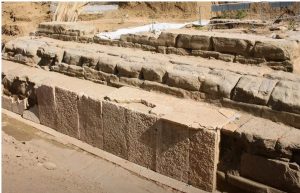Exciting Discovery: Roman Capitolium Temple Unearthed in Sarsina, Italy
In a recent press release from the Italian Ministry of Culture (MIC), archaeologists have unveiled the existence of a Roman temple in the picturesque Italian town of Sarsina.
During antiquity, Sarsina was a thriving settlement inhabited by the Umbri, an Italic people who fell under Roman dominion during the 3rd century BC.
Subsequent to the Romans’ annexation of Umbri territories, Sarsina evolved into a prominent hub within a pastoral district. It also holds the distinction of being the birthplace of Plautus, a renowned Roman playwright whose comedies constitute some of the earliest surviving works in Latin literature.
Today, Sarsina bears witness to the vestiges of several ancient Roman structures, including public baths, remnants of additional temples, town defenses and fortifications. Over the years, archaeologists have uncovered a treasure trove of artifacts, including amphorae, ceramics, pillars, and bronze objects, adding to the town’s historical tapestry.

In the latest excavations, archaeologists have unearthed the remnants of a substantial quadrangular temple, tentatively dated to the 1st century BC. Key archaeological features include horizontal courses of sandstone blocks forming a podium and sandstone flooring within the adjacent forum.
Researchers speculate that this structure is likely a capitolium, a temple consecrated to the Capitoline Triad of deities: Jupiter, Juno, and Minerva. During the Augustan and Julio-Claudian periods, capitolium temples were typically erected in locales of great significance to the burgeoning Roman Empire, such as Rome, Pompeii, Ostia Antica, Brescia, and Cosa.
Gennaro Sangiuliano, Minister of Culture, expressed his enthusiasm, stating, “This discovery represents a significant archaeological treasure that promises to yield valuable insights into the history and evolution of this specific geographical region. It constitutes a pivotal contribution to our comprehension of the past and may hold profound implications for historical and archaeological research.”




